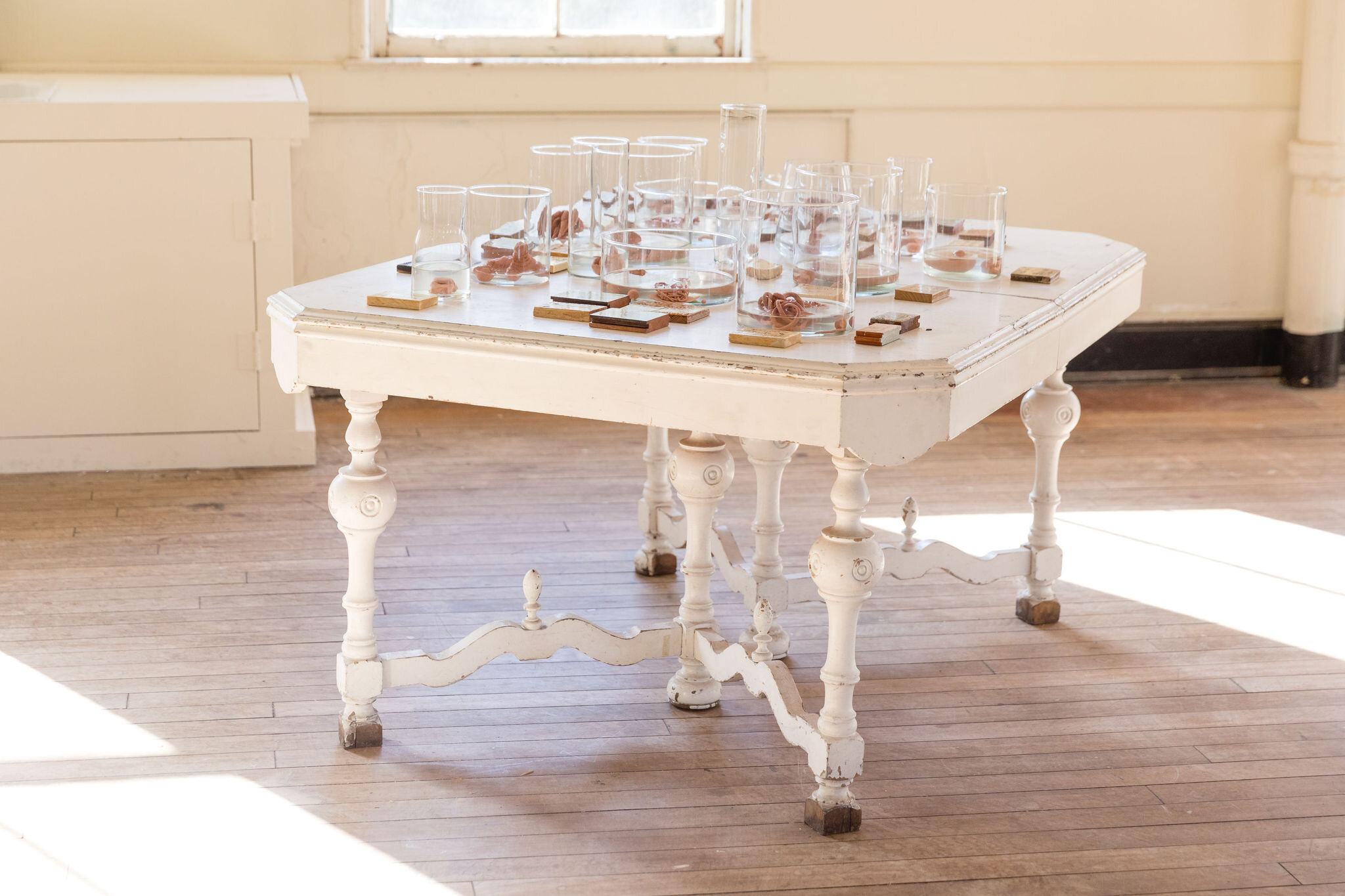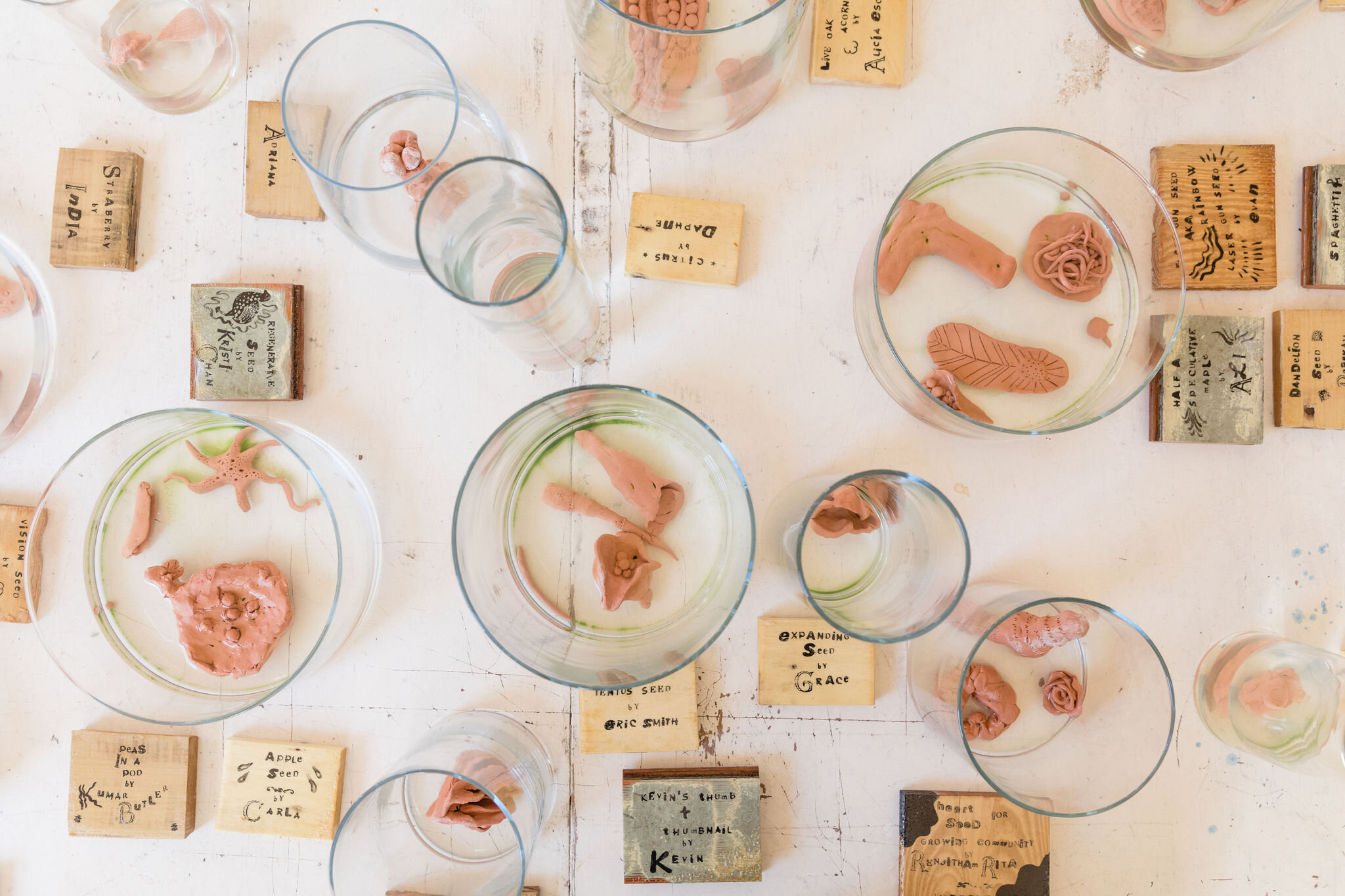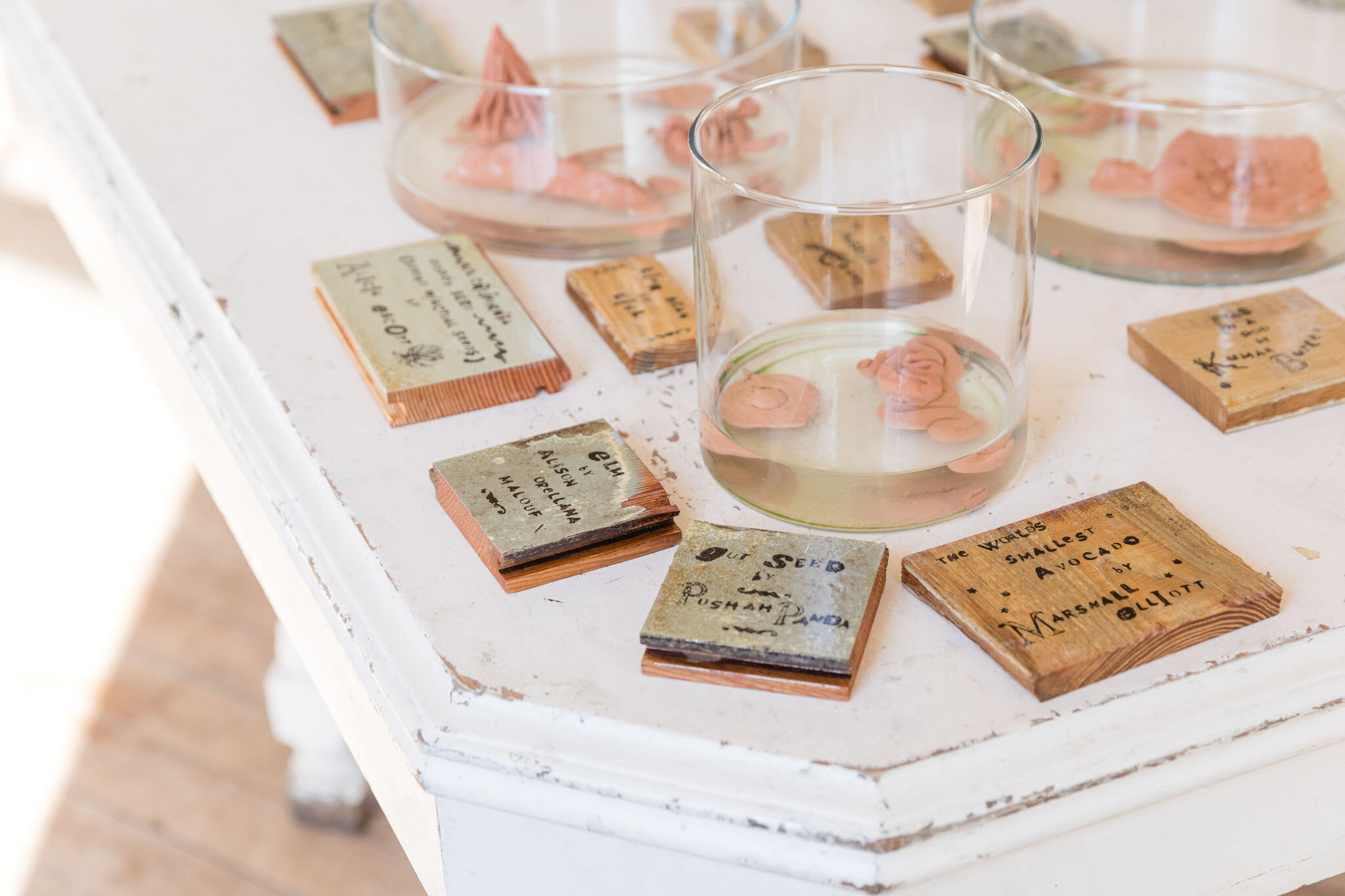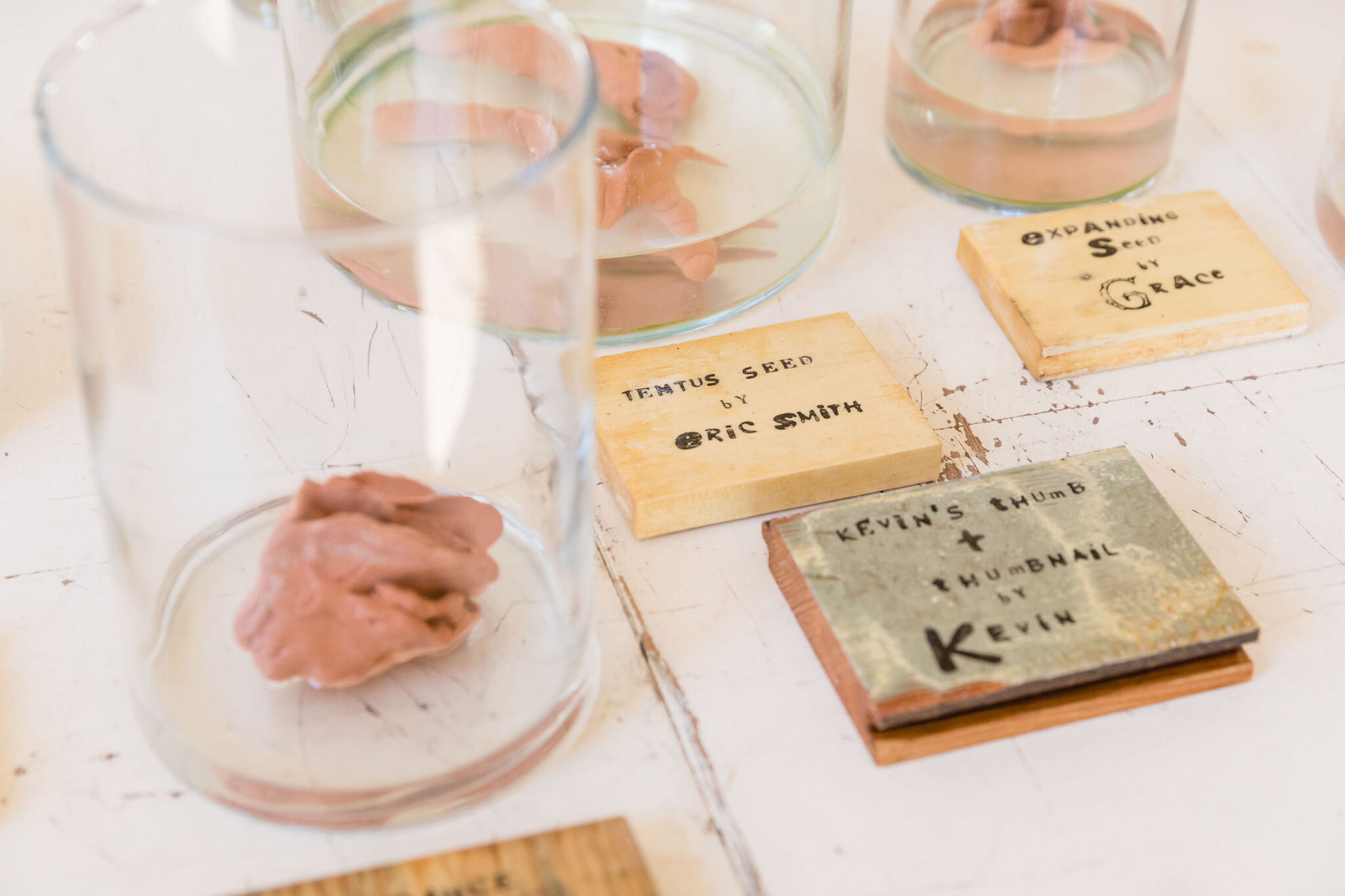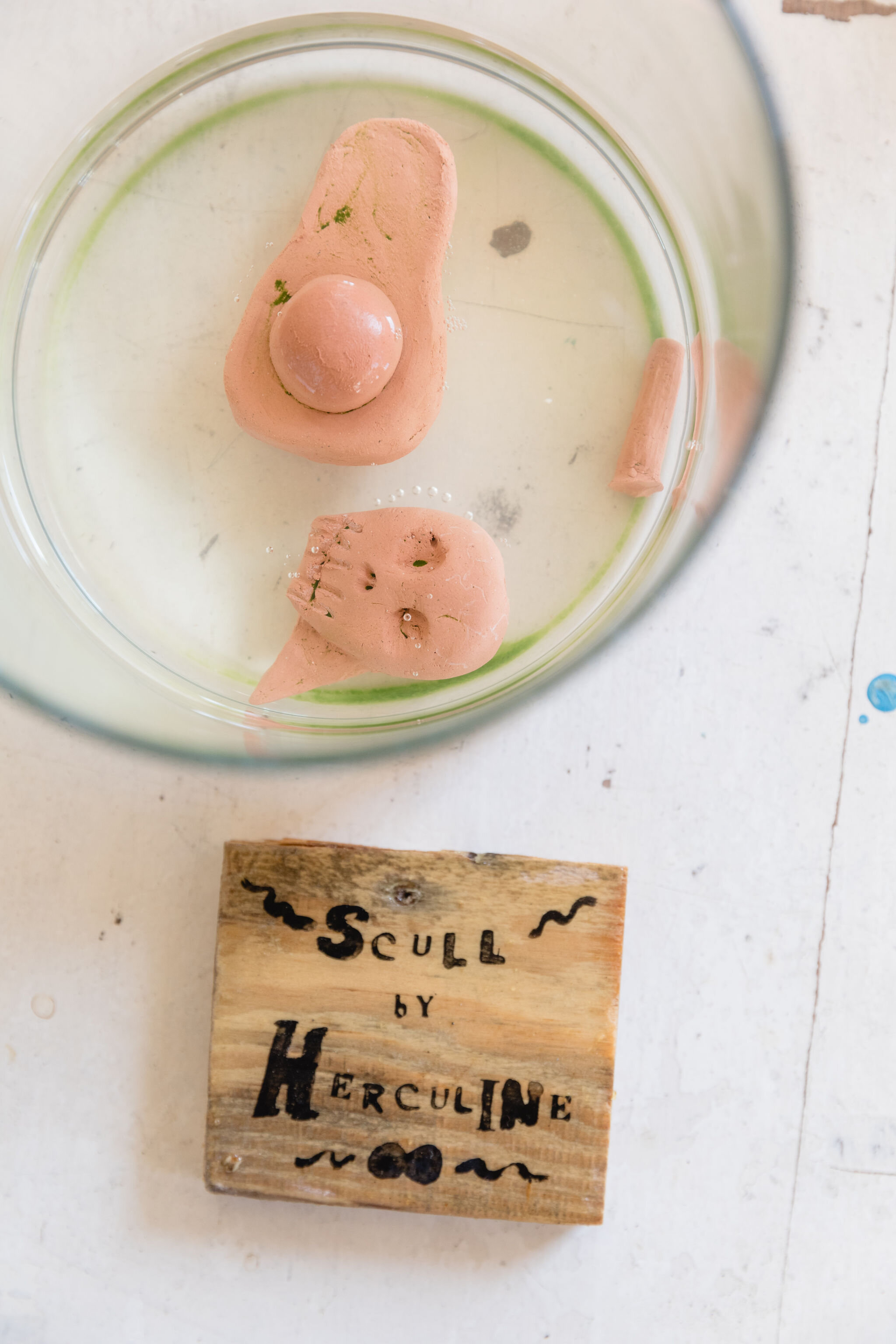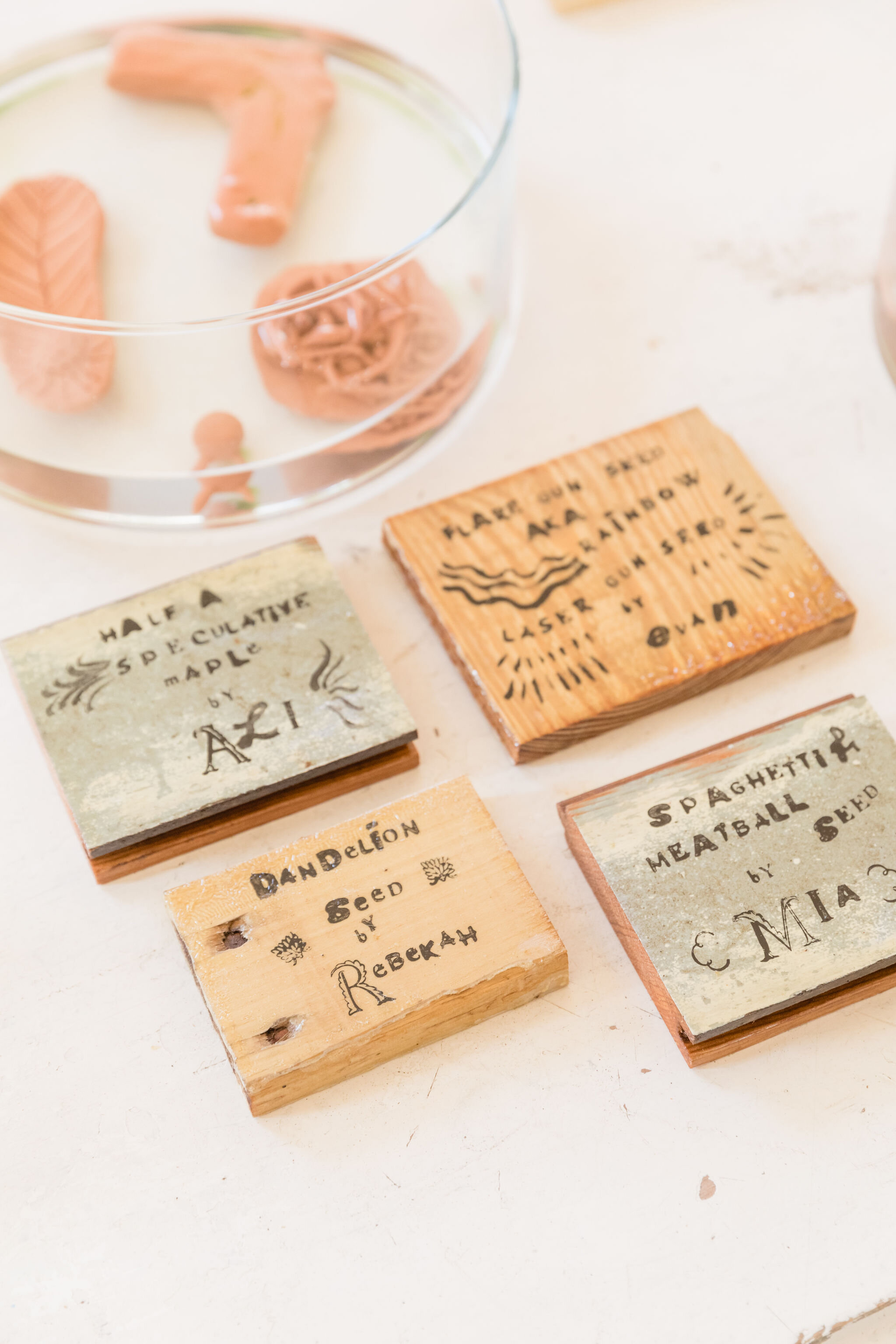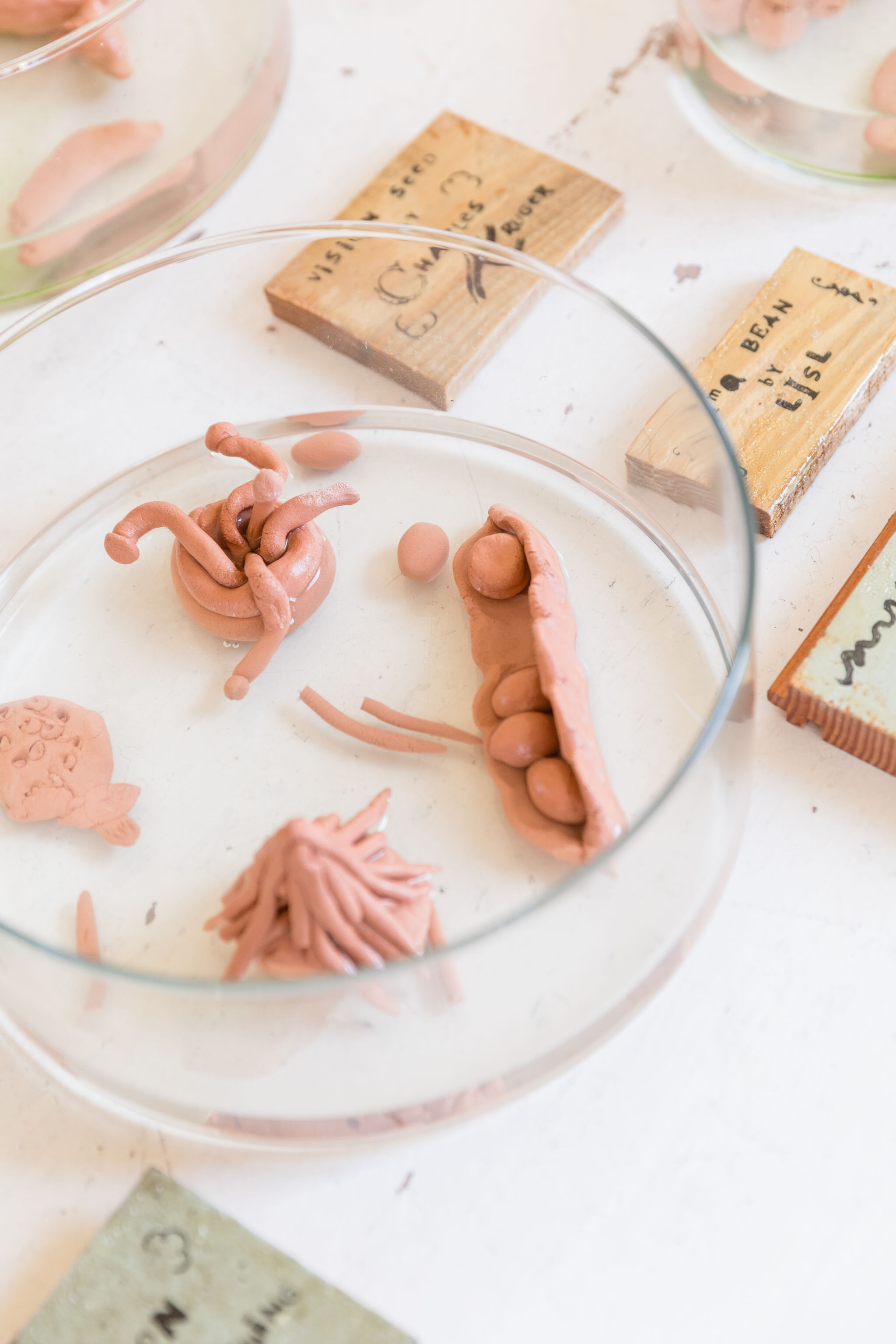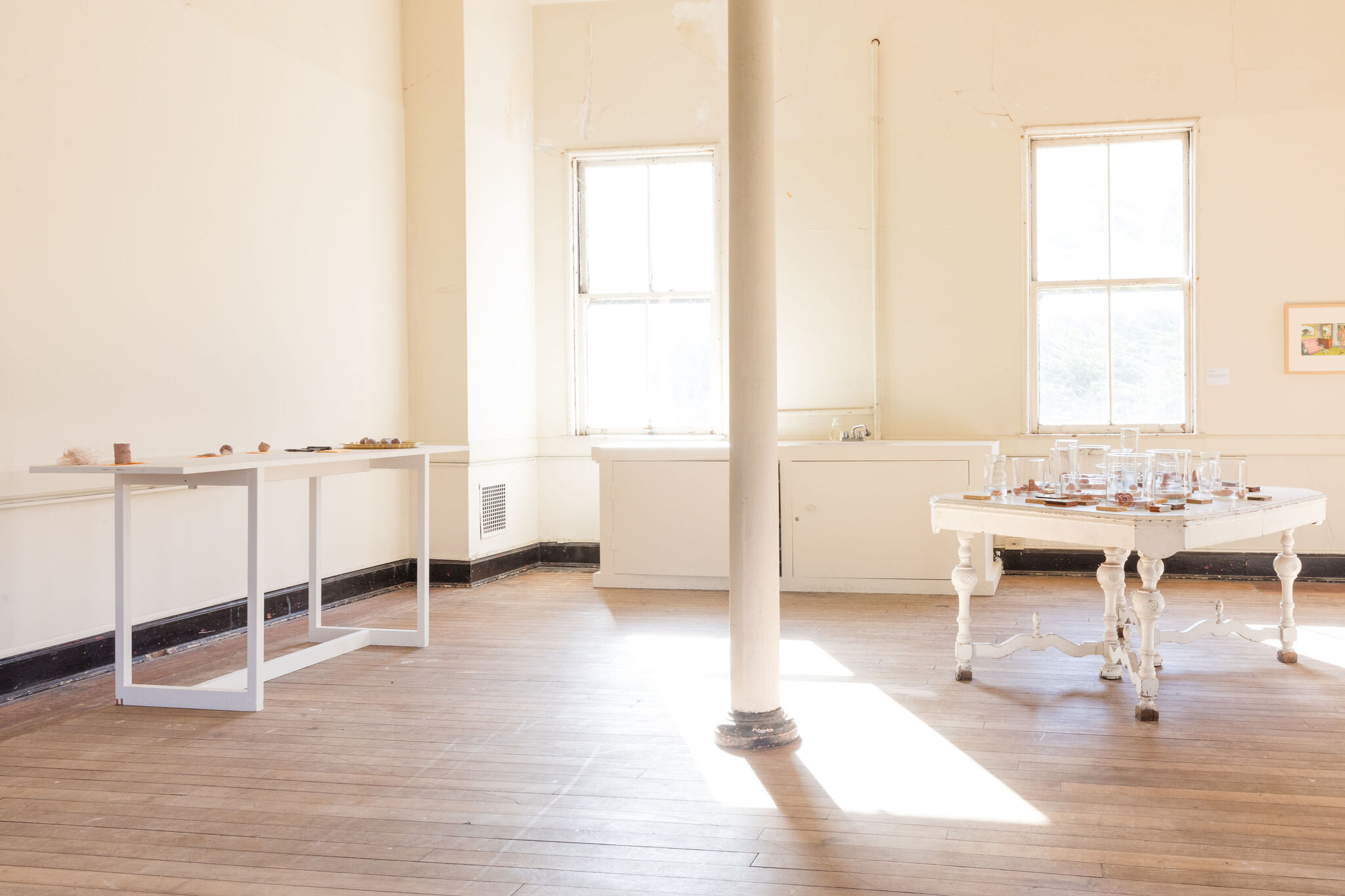Seed almanac (installation view), 2020. Collaboratively-made bisqued stoneware seeds, live synechococcus* and prochlorococcus* cultures, moist stoneware clay, glass basins, seed identification tablets made of salvaged wood, dimensions variable. Installed at the Headlands Center for the Arts. Photography by Andria Lo, courtesy of the Headlands Center for the Arts.
Seed almanac was an exhibition-within-an-exhibition that invited viewers to consider the possibilities for our present hopes and fears to seed speculative and emergent futures, via small aquatic basins containing a primordial soup of live cyanobacteria colonies and clay “seeds” previously made in collaboration with participants during the October 2019 Open House at Headlands, during which they made “seeds” ranging from strawberries and apple seeds to spaghetti-and-meatball seeds, flare gun seeds, and heart-seeds for building community. Seed almanac — named after an ongoing seed-making workshop of the same name — invited visitors to make seeds out of clay and to respond to the following prompt: If you could have any seed with you at the end of the world, what would it be?
Each glass basin contained a ‘soup’ of the clay seeds harboring colonies of living synechococcus* and prochlorococcus*, two of the most abundant varieties of phytoplankton (plant plankton) living in the world’s oceans. Significant sources of oxygen production worldwide and organisms foundational to the oceanic food chain, these photosynthetic cyanobacteria help form the basis of life on earth.
Because this installation opened Nov-Dec 2020, visitors were welcome to each take a bag of stoneware clay and to make a seed “for the end of the world” either at the standing table or at home. When I held these workshops in person, they became avenues through which I was able to have low-stakes and surprisingly optimistic conversations with strangers about climate change, drought-resistant agriculture, and what survival means to each of us.
*Prochlorococcus and Synechococcus cultures and sea water media courtesy of Nina Yang and the Hutchins-Fu Lab of the Marine and Environmental Biology section, Biological Sciences at the University of Southern California.
